The Intranet Redesign Process
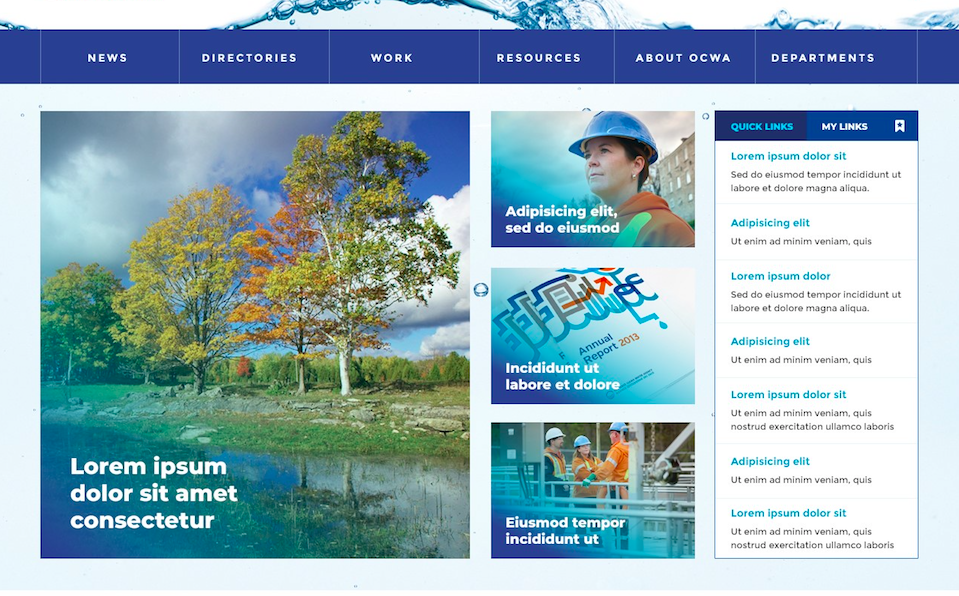
The best intranets don’t come out of a box. Great intranets require a lot of work, and many months, if not years of planning and preparation.
Case in point: the most recent Intranet Design Annual (NNG) featured 10 winning intranets; the average cycle for an intranet redesign ran 14 months. Eighteen to 20 months is not unusual.
Most intranets need more than a face-lift — most intranets need a complete overhaul or a deathblow. Each organization is unique, with unique cultures, objectives, structures, processes, and employees. So the redesign process can be a long, complicated and daunting process. More than a few intranet managers have been overwhelmed by an intranet redesign.
“We don’t even know where to begin,” – Fortune 500 intranet manager.
Your intranet is an ecosystem that maintains a three-way balance between people, technology, and process. Naturally, your people are the most important ingredient that deserves the most attention and energy. This means that you first and fore mostly need to ensure that you are in a position to align all three aspects of your digital workplace ecosystem – starting with people. So before embarking on your new intranet journey, start with the people at the top; ensure that you have executive sponsorship and support.
People
To succeed, the intranet needs funding, and it needs powerful supporters. Every intranet needs an executive champion — or two.
At GoDaddy, the intranet champion is the CEO. It’s not wonder, they have a successful intranet. In fact, all of the GoDaddy senior management team are active champions. So much so, they don’t consider any one office or building to be their headquarters. GoDaddy considers their intranet to be their headquarters.
“People ask me where the headquarters of GoDaddy is and I say there’s no physical headquarters. Headquarters is The Planet (the intranet). The thing that binds us in our values is our communications. It is the headquarters of good ideas,” says Auguste Goldman, Senior Vice-President of Customer Care.
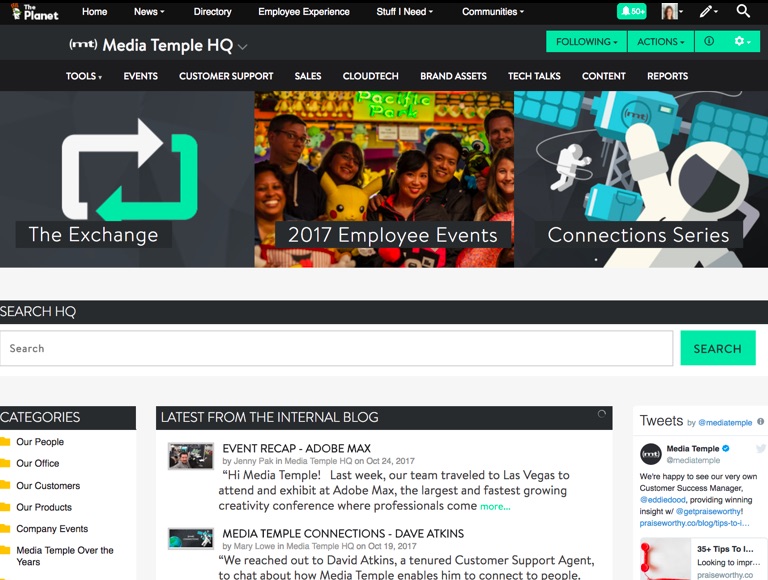
“We call our intranet The Planet for a reason…because it is our headquarters,” says Kim Clark, Director of Internal Communications for GoDaddy. “The Planet gives equal visibility across regions, teams, cultures and is the home base from where we can connect, have access to the company strategy, values, recognition, and news.”
“It’s democratic in that folks can start their own groups, build their brand across the company by commenting on company blogs,” adds Clark. “The Planet is a reflection, a reinforcement and co-creator of GoDaddy’s global culture.”
Users
Not all of your intranet users will have the same needs. This means that the employee from Santa Monica will look for different resources than the one in Atlanta. Similarly the associate from Communications will need different information, tools, and forms than the one from Sales. Also not to be overlooked are the ways these different user audience types may wish to interact with content, and with one another. It is highly unlikely that your Millennials will wish to consume and communicate information in the same ways that some of your more seasoned employees.
Firstly, define your audiences by segment and/or role. This can be by departments, offices, regions, or even operations. Determine what executives require from the intranet; document key roles and personas for the most common roles in the organization, down to frontline employees. Examine the information and/or areas of the intranet that most employees need and use. These may include various types of communications, HR applications, finance tools, and even separate portals – each of which may have individuals or teams supporting them whose needs must also be understood.

With your audience defined, you may then tap into various groups and teams using a number of different methods. Some of these methods may include polling users, interviewing management, or conducting focus groups. When engaging with various representatives of your user groups, it is important to gain an understanding of what is important to them. What tools are they using? What content is valuable? Does the corporate culture differ for different groups? How is the existing intranet lacking? What future needs can the intranet address?
You may be surprised what you may learn when looking at different corners of the organization through different lenses, and especially in the context of intranet processes. A thorough understanding of your intranet users needs and requirements will focus your priorities and provide the context and foundation for planning the intranet redesign.
Process
Knowing your audience provides a great foundation for understanding where your intranet is today, and where it needs to be tomorrow. But of course, priorities need to be assigned to the collections of intranet requirements. Should Communications have more of a say than HR? More importantly, once the new intranet is up and running, who is going to be needed to keep it afloat? Of course there’s always going to be IT development and support, but other groups and company processes will be intertwined (e.g. Training, Payroll, Communications, etc.). Knowing the needs of your audience will help you understand where and how the intranet will play within your organization.
Intranet consultants Prescient Digital Media recommends intranet managers follow a defined process methodology, such as their Intranet Project methodology:
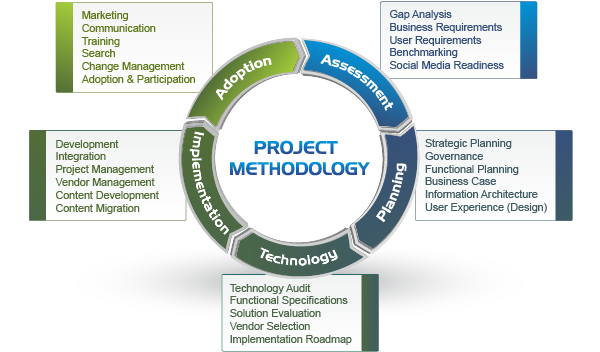
Planning
In short, your intranet needs a strategic plan and a rigorous governance model to support the intranet plan. The intranet strategy is essential as it ties the intranet to organizational performance and success. The intranet must be formally aligned to and support the organizations’ strategic directives. If the company’s top priority is to sustain market leadership, then the intranet must directly support that directive. This formal alignment with company strategy will also establish a baseline for tracking and measuring your intranet performance over time. And, a formal intranet plan paves the way to prioritizing the features that provide the most value to the organization. You may then invest resources to focus on specific features, such as knowledge sharing and customer service, as key intranet tools and applications.
Governance flows from the intranet plan and details the assigned roles, responsibilities and rules for managing the intranet. The most important ingredient for any intranet is governance (starting with executive sponsorship). Simply put, governance defines the intranet ownership and management model including the:
- Management team
- Roles & responsibilities of contributors
- Decision making process
- Policies & standards
Like the content of your website or intranet, planning and governance is technology agnostic; whether it’s SharePoint, IBM or another portal or content management system, the necessity for and the approach to governance is the same. Given its technology neutral status, governance is largely applicable to any technology platform.
This may include creating steering committees, designating a dedicated intranet owner, editors, and IT personnel to ensure intranet success. Every key intranet role must have defined responsibilities that should become a part of each member’s job description. Additionally, key policies must be created that address everything from creating and managing content, to collaboration and social media use.
Technology
Beyond the technology itself, will be the intricacies of implementing an intranet platform that supports your intranet plan, and your user requirements. With the people and process in place, now the intranet manager can select the right intranet technology platform, applications, tools, etc. to drive a successful digital ecosystem. This may include integrating existing systems wherever possible, but this further helps to assess and select various intranet technologies, should you be in the market for new software and intranet solutions.
A functional plan should detail the form and ‘functions’ of your new intranet. A functional plan describes the features and functions of the site, including the planned tools, content management system, applications, etc.
Content
While modern web design may ascribe to the ‘three-click rule’ as best practice, this simply isn’t possible for intranets with hundreds-of-thousands if not millions of pages and documents. Your organizational content may require more than three clicks to access, and that’s okay. What’s more important is knowing what should be available within a few interactions and bringing it as close to surface as possible. The best way to do this is to rethink your information architecture.
All content requires a solid schema for cataloguing, storing and tagging. Too often, especially as intranets grow over time, information is segmented (or “silo’d”) by functional area or department. Completely overhauling your information architecture can be risky: employees likely want to preserve what they know and understand. Work with employees in focus groups and card sorting exercises to best understand how users want to group and label content, and therefore how the information architecture can best determine navigation paths.
Tip: Create redundant paths to the same information (via navigating the information architecture, using the search engine, clicking through a site map or My Links functionality).
Additionally, every intranet requires a taxonomy. A “term store” for applying meta tags and keywords to every piece of content — every document and page must have keywords and meta tags that adhere to a central intranet taxonomy. Ensuring that metadata is applied to all content improves more than just the user experience, it will also better supports the search engine and search engine results.
Intranet Design
Whether or you have selected your intranet technology or platform — independent of the technology — the user experience design should flow smoothly from your functional plan and information architecture. Beginning with wireframes with spatially layout the structure and organization of your home page, major sections and content templates.
Wireframes
Intranet wireframes, or page layouts, depict page elements and positioning of content blocks and tools. The wireframe is only structural; akin to a blueprint, with the absence of branding, color and images. Wireframes should be constructed not only for the desktop, but for mobile phone for those employees who access the intranet primarily from their phone.

At this stage some usability testing can be conducted to test the intuitiveness of the navigation. The subsequent design concept can then be applied to the approved wireframes based on brand guidelines.
Design Standards
It is crucial to gain feedback from your stakeholder groups before implementing the intranet design concept. This may be done by presenting different concepts to various steering committees and employee segments via focus groups, and by conducting usability tests to capture reactions and suggestions throughout. Regardless of your implementation phasing and strategy, be sure to capture the appropriate branding and design guidelines to be used throughout the new intranet.
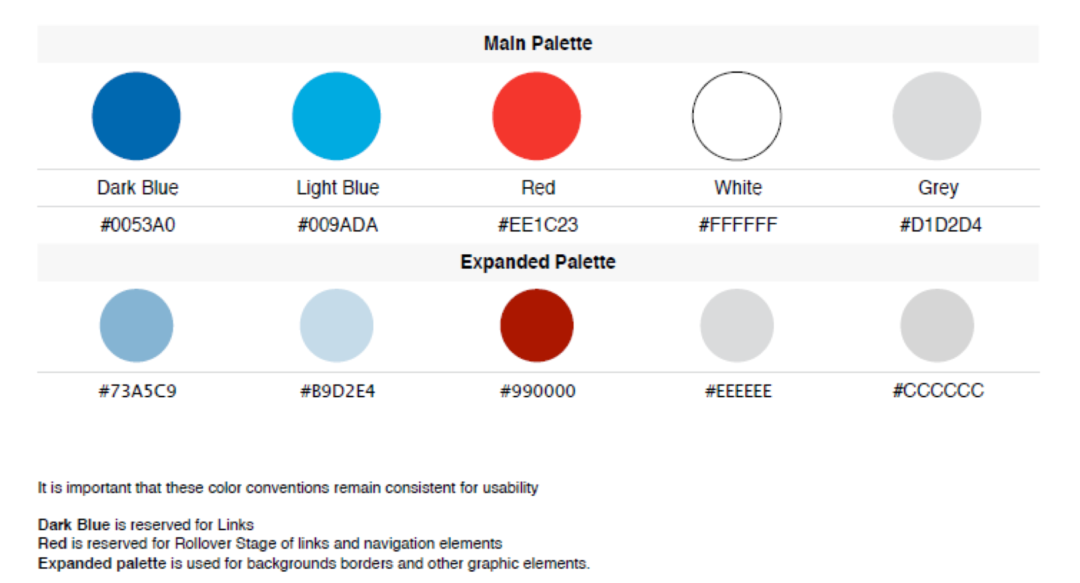
Among the plans that must be created prior to engaging a graphic designer or intranet design consultant, is the creative brief (design guidelines) with detailed design elements including color palettes, font types, iconography, image treatments, spacing, page templates and other preferences. Additionally, your intranet design standards should also detail the particulars relating to the mobile or responsive design. This is critical for ensuring a consistent, unique, modern look and feel across the new intranet and as it evolves over time.
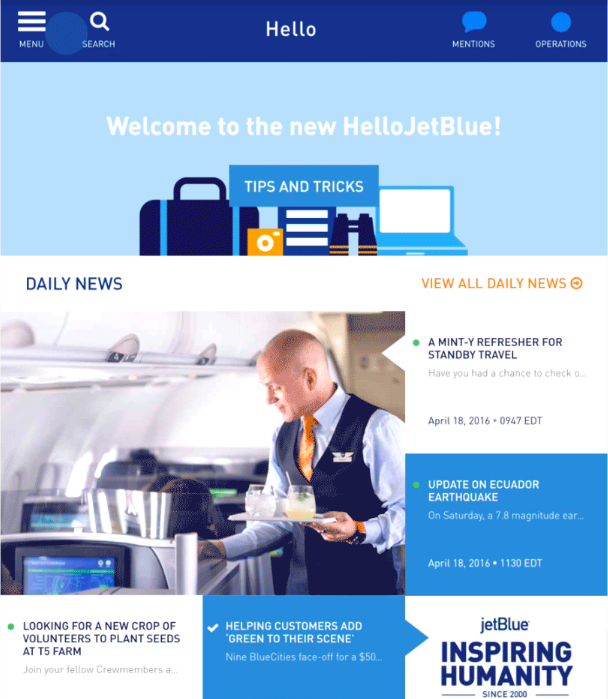
Keep in mind your organization is unique, and therefore requires a unique approach to the intranet. Simply copying or emulating another intranet is not only wrong, it may well alienate your users and lead to a failed intranet. Regardless of your situation, it is important that you devote attention and resources towards activities within each of the intranet redesign stages to adequately ensure the balance between user audience needs, business processes, and modern best practices. This will not only ensure that you have a well-functioning and engaging intranet, but will also serve you well during implementation, change management, and related phases of launching a successful new intranet.
Great intranet redesign case studies will be showcased by some of the World’s best intranets – from GM to Coca-Cola, Microsoft and Liberty Mutual – at the 2019 Digital Workplace & Intranet Global Forum conference in New York. Reserve your intranet conference seat now and bring a colleague for 50% off.
